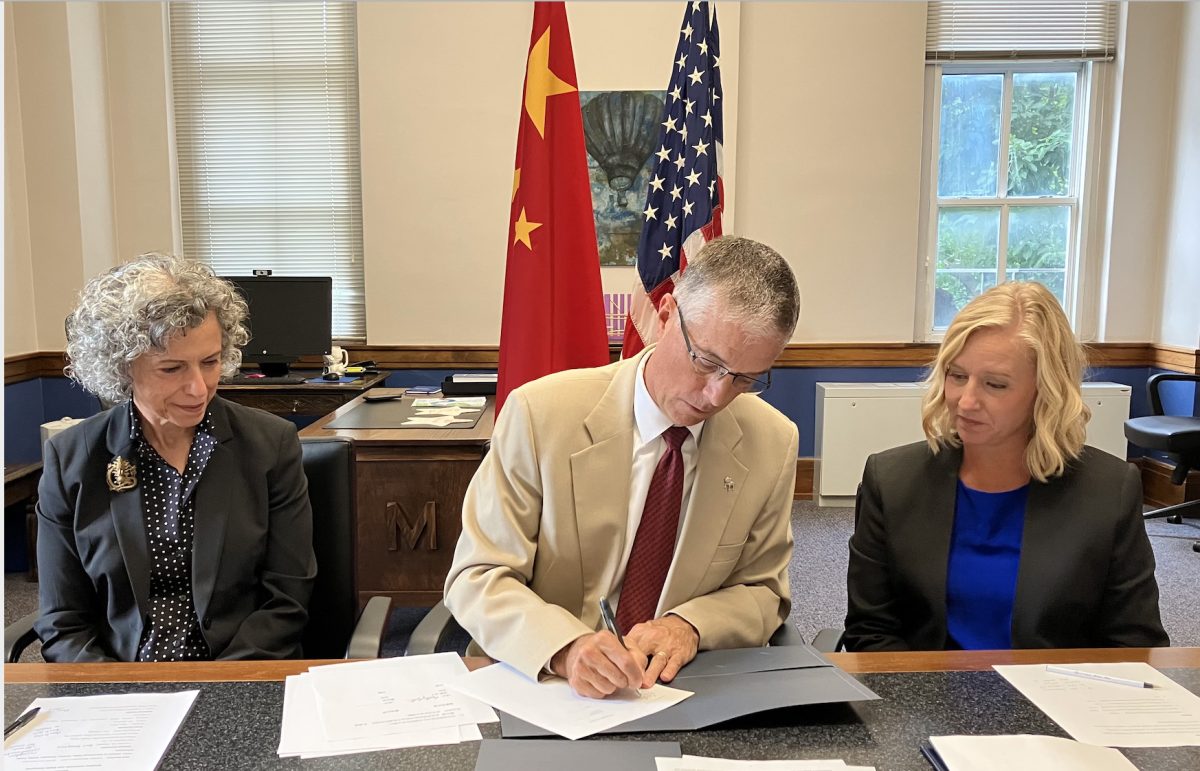STORY BY KATIE SCHLEBECKER
It starts with muscle weakness in your hands, arms, legs or even the muscles needed to speak, breathe or swallow.
Soon you start developing twitching or cramping in your muscles especially your hands and feet. Eventually you lose the use of your arms and legs. You can’t project your voice; they say you have “thick speech.” You can’t breathe or swallow normally. You have no control of your symptoms, yet you continue to decline. Time scares you — it could come fast, or it could take its time.
All you know for sure is that ALS is horrifying.
Amyotrophic Lateral Sclerosis (ALS), more commonly known as “Lou Gehrig’s Disease,” affects 5,600 people in the U.S. alone each year — that’s about 15 new people a day. For the estimated 30,000 people in the U.S. living with ALS ,every day is a constant struggle.
As a progressive neurodegenerative disease, ALS slowly corrodes the motor neurons of the nerve cells in the brain and spinal cord. As the motor neurons die, the brain loses its ability to initiate and control muscle movement — leading to eventual death.
I saw firsthand the toll ALS takes on not only the victim, but the family and supporters as well. My grandfather was diagnosed with ALS in 1993 and lived with the disease for 20 years.
I can remember him with a walker when I was very young, but most of my memories consist of a man held captive to his bed. He could always communicate with us, whether in writing, typing, or talking, but it was always difficult to understand. He was a professor, a father and a great story-teller, but his ALS limited him from being able to spend time with his family the way he truly wanted to.
Since the average life span post ALS diagnosis is an average of two to five years, my grandfather was one of the five percent that live for 20 years. He was even someone doctors studied.
The ALS foundation has raised over $108.9 million as of Sept. 6 from the Ice Bucket Challenge alone. Millions of dollars have been donated to fund new research projects to help find a cure or cause, to aid victims and their families and to develop new medications. The money raised this year is more than four times the amount the ALS foundation raised last year.
You might say that the challenge is a craze, that it’s not truly raising awareness for the disease, but just consider the fact that the challenge has raised more awareness and general knowledge for this disease than any other attempted strategy.
I love that people are donating, no matter how large, to help such an honorable cause.
So before you go complaining about your newsfeed being clogged with videos of people dumping ice on their heads, just remember your newsfeed will eventually go back to normal.
But right now, each and every one of those videos is making a difference not only for ALS research, but for the lives and happiness of those affected by this terrible, crippling disease.







Meyer Odette • Sep 2, 2024 at 4:30 am
I am a CALS of my 68 year old Husband who suffered from muscle tiredness brought on by chronic fatigue in its early stages. Neurologists first had difficulty diagnosing it until multiple examinations indicated ALS, for which there was no known cure other than the prescription of riluzole medications, vitamins, and therapies. More advancements in breathing difficulties, difficulty pronouncing words, and difficulties eating occurred before we made the decision to try different medications, which significantly enhanced his condition. He received treatment for ALS/MND at vinehealthcentre. com from the U.S approximately four months ago; since then, he has stopped using a feeding tube, sleeps well, works out frequently, and has become very active. Although it doesn’t cure his ALS, it has improved his quality of life. .